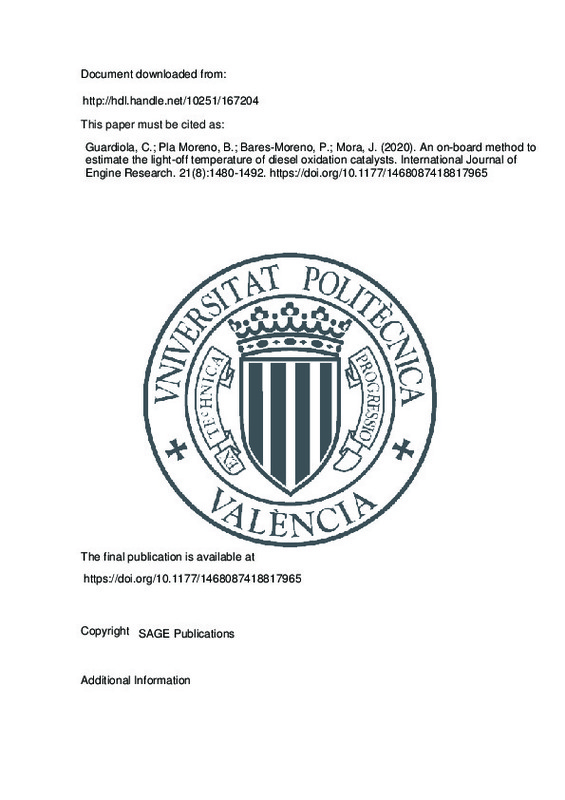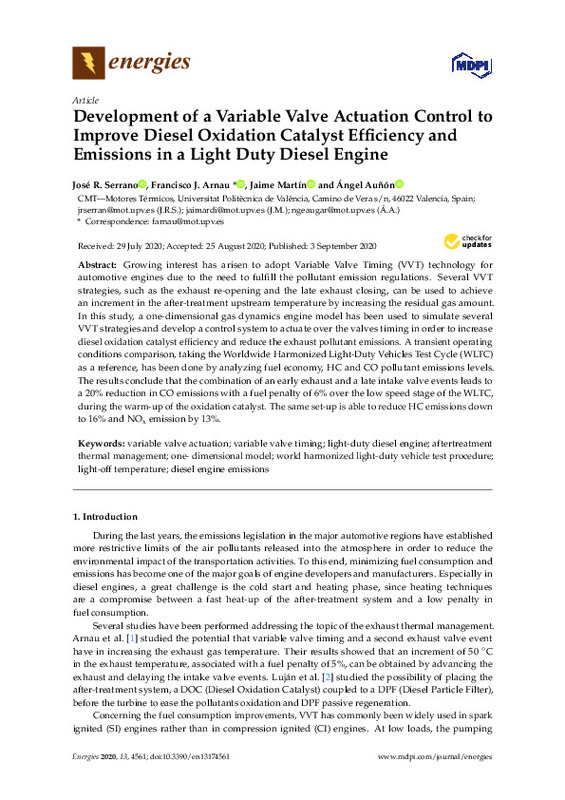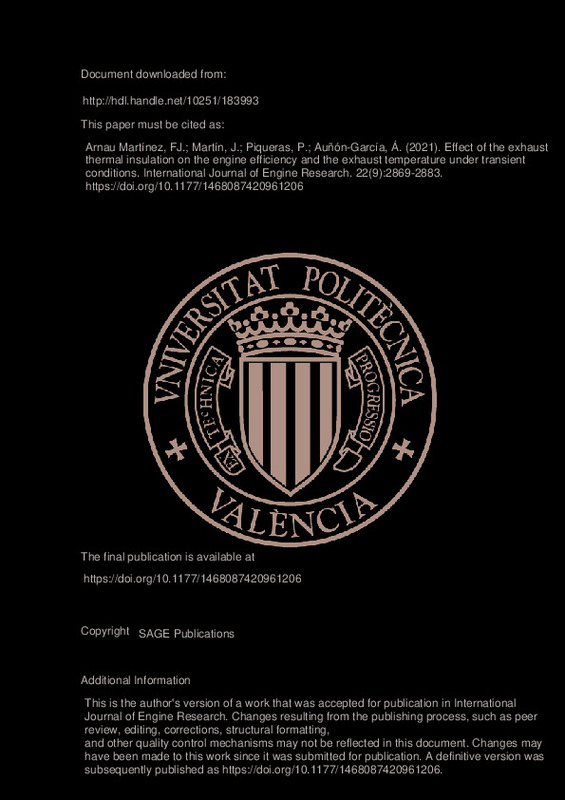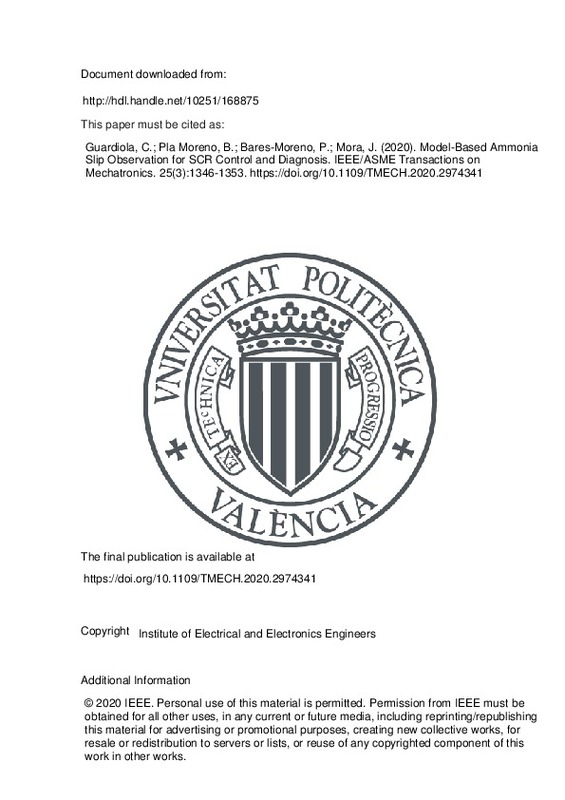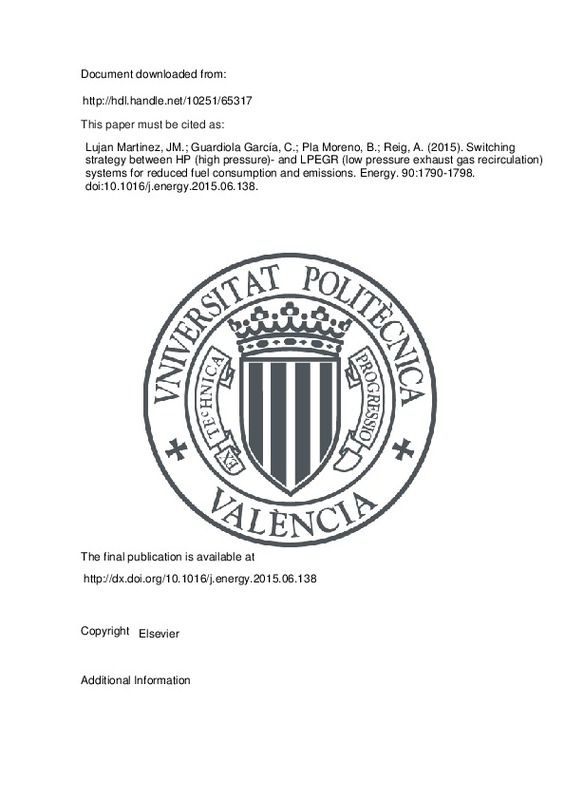

Listar por palabra clave "Diesel engine emissions"
RiuNet: Repositorio Institucional de la Universidad Politécnica de Valencia
- RiuNet repositorio UPV
- :
- Listar por palabra clave
JavaScript is disabled for your browser. Some features of this site may not work without it.
Buscar en RiuNet
Listar
Mi cuenta
Ayuda RiuNet
Admin. UPV
Listar por palabra clave "Diesel engine emissions"
Mostrando ítems 1-6 de 6
-
Guardiola, Carlos; Pla Moreno, Benjamín; Bares-Moreno, Pau; Mora, Javier (SAGE Publications, 2020-10)[EN] Current diesel engine regulations include on-board diagnostic requirements so that after-treatment systems need on-board methods to detect their aging state through the available measurements. In a state-of-the-art ...
-
Serrano, J.R.; Arnau Martínez, Francisco José; Martín, Jaime; Auñón-García, Ángel (MDPI AG, 2020-09)[EN] Growing interest has arisen to adopt Variable Valve Timing (VVT) technology for automotive engines due to the need to fulfill the pollutant emission regulations. Several VVT strategies, such as the exhaust re-opening ...
-
Arnau Martínez, Francisco José; Martín, Jaime; Pla Moreno, Benjamín; Auñón-García, Ángel (SAGE Publications, 2021-04)[EN] Due to the need to achieve a fast warm-up of the after-treatment system in order to fulfill the pollutant emission regulations, a growing interest has arisen to adopt variable valve timing technology for automotive ...
-
Arnau Martínez, Francisco José; Martín, Jaime; Piqueras, P.; Auñón-García, Ángel (SAGE Publications, 2021-09)[EN] As well as new advances in the after-treatment systems are required to achieve the new pollutant emission requirements, new designs of the exhaust line can be considered in order to increase the engine efficiency and ...
-
Guardiola, Carlos; Pla Moreno, Benjamín; Bares-Moreno, Pau; Mora, Javier (Institute of Electrical and Electronics Engineers, 2020-06)[EN] The control of selective catalytic reduction (SCR) systems, via NH3 injection, requires from a precise estimation of the SCR load in order to ensure NOx reduction by minimizing ammonia slip. This article aims to resolve ...
-
Lujan Martinez, José Manuel; Guardiola García, Carlos; Plá Moreno, Benjamín; Reig, Alberto (Elsevier, 2015-10)EGR (Exhaust gas recirculation) plays a major role in current Diesel internal combustion engines as a cost-effective solution to reduce NO emissions. EGR systems will suffer a significant evolution with the introduction ...
Mostrando ítems 1-6 de 6

Universitat Politècnica de València. Unidad de Documentación Científica de la Biblioteca (+34) 96 387 70 85 · RiuNet@bib.upv.es


